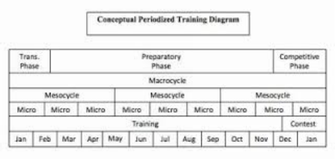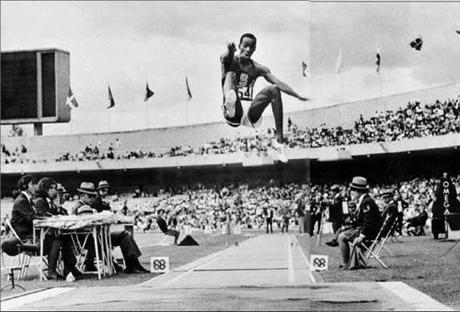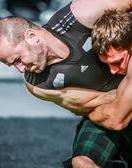Always consult a doctor before undertaking a new exercise routine. If perform incorrectly these exercises could result in injury or death.

MMA has developed into one of the most technically and physically demanding sports on the planet. One of the greatest challenges that MMA places on its combatants; is the huge range and diversity of skills and fitness requirements that have to be studied and mastered in order to compete at the top level. Muay Thai, Freestyle Wrestling and Brazilian Ju Jitsu are just some of the disciplines that need to be addressed and practised, whilst speed, power, stamina, flexibility and strength are necessary physical proficiencies that form the foundation of every successful fighter.
In order to accommodate and succeed in all aspects of MMA, a fighter should break down his training into a number of separate goals. A general base of fitness needs to be established, and then specific goals are set to reach peak performance at a set time.
It was outstanding athletics coach Arthur Lydiard that noted ‘Athletes tend to repeat basic training patterns over and over again, yet with each repetition of the basic plan they expect different (i.e. better) results’. Without a periodised training programme, fighters will reach a plateau relatively quickly. In addition, many sport scientist theorise that peak performance cannot be maintained and therefore should be in order to coincide with key competitions.

The body does not adapt well to numerous overloads at once, and therefore the different aspects of physical fitness, such as strength, muscular endurance and V02Max training should have separate periods where they are emphasised. Motor learning is similar, in that the phases of learning are progressed through more quickly if the brain can focus on one or two things at a time.
Therefore, especially when an individual first enters the sport, it is best to separate technical training into stand up, wrestling, and ground fighting, and have periods of time when each is emphasised while the others are maintained. This is the foundation of periodised training.
The organisation of training can be dated back to the ancient Olympics. However it was not until the early 1900s that specialists such as Murphy and Kotov suggested preparatory exercises and distinct phases. Research and further development into periodisation, took its next significant steps in the 1960s when Russian physiologist Leo Metveyev and Czechoslovakian sport scientist Tudor Bompa expanded and organized the periodization model. Since the 1960s, Bompa’s model has been tweaked and expanded upon by many sport scientists, but the basic fundamentals remain the same.
In a non periodised training programme; all physical parameters contributing to sporting performance receive equal attention throughout the year. This approach is less efficient than a sensible periodised programme due to a number of factors:
– lack of time in a single week to fully attend to all the parameters that influence performance
– The development of some physiological parameters are interfered with by the concurrent development of others
– Some components of performance can not be adequately developed before certain prerequisites are met.
The complete periodisation of an MMA fighter’s routine would take at least a few days to put together. When you consider that every thing from striking power, core stability, nutrition and strength has to be periodised in relation to everything else. It gives me a headache just thinking about it! I’ll do my best to touch on strength training.
The importance of strength training for MMA is not to build big muscles, since they are rarely equated with improvements in power. In fact strength should be built along side other important abilities such as reactive power and power endurance. Strength training must be structured into training phases leading into a competitive phase. If during fights, strength gains are not effectively utilised to produce peak performance, then the whole training has been useless regardless of muscle size.
Gains in strength must lead to fight specific adaptations. A fighter requires the development of three main abilities:
- Power – refers to the state of applying force. When speed is integrated with maximum strength, power is the outcome.
- Reactive power – being able to repeat powerful movements in quick succession. For example, immediately throwing a jumping knee after falling to execute a double leg.
- Power endurance – the ability to throw hard strikes, and remain explosive throughout a fight.
According to Tudor Bompa, strength training is time phased into five distinct sections. A typical periodised strength training plan would incorporate the following:
Phase 1: Anatomical Adaptation
Phase 2: Hypertrophy
Phase 3: Maximal Strength
Phase 4: Conversion Phase
Phase 5: Transition
Phase 1: Anatomical Adaptation
The first phase is known as anatomical adaptation.
This phase forms the base of your strength. It is an important, but often neglected part of training. It is required after a medium to long term rest from training, or when beginning a strength based programme. Ligaments, tendons need to be overloaded extremely gradually, and the central nervous system needs to adapt to new weight lifting techniques before the muscle will become a limiting factor (rather than technique or ligament strength). The exercises in the phase will be general in nature, focusing on the often neglected qualities such as joint stability, strengthening connective tissues, correcting structural imbalances, and preparing for the more intense and specific training to follow.
The length of time spent in this phase will depend on how long a fighter has rested from training and/or their training history. The novice fighter may spend 8 weeks in this phase, whilst others may spend as little as 2 to 3 weeks. When training for strength, intensity is fairly low, lifting weights of around 60% of 1 rep max, with high repetitions (between 8-15).
The exercises incorporated in this phase will again depend on the fighter’s experience. Exercises such as deadlifts which put great stress on the core and require a fairly high level of technique, would not be recommended for those who have not trained with weight before. Similarly for those who have not weight trained before, it is recommended that repetitions are kept high, until correct technique and posture for each exercise is learnt accurately.
The length of the routine, including the number of sets will also depend upon the intensity and duration of other training undertaken (thai boxing, wrestling etc). Within the last 2 years, their has actually been an increasing body of evidence suggesting that training one set of an exercise to failure is just as effective in building strength as training with multiple sets. Although more research is required with elite athletes, this would suggest that a workout lasting as little as 30 minutes could be highly effective.
The below programme is recommended for an individual with no experience of weight training. It consists mainly of compound and core exercises that will form a base of strength, core stability and technique for the rest of the programme. I have seen exercises such as deadlifts, squats and even variations of Olympic Lifts added into this phase. From my own personal experience I have found that due to a lack of core strength, and due to massive muscular imbalances in beginners, such exercises are rarely effective. Instead I have included exercises such as front squat and overhead squat which will predominantly stress and develop the core, and will prepare the body for the exercises to come.
Remember to do ten minutes of cardio and mobility exercises before doing any weight training. As with every phase leave at least 1 day in between routines.
Day 1
Dumbell Bench Press 3 sets x 15 reps
One arm Row 3 sets x 15 reps
Single leg calf raise 2 x 20
Leg Press 3 x 12
Lunges 2 x 12
Swiss ball crunches 2 x 15
Plank 2 x Hold for 45 secs
Side plank 2 x Hold for 45 secs
Superman 4 x Hold for 20 secs
Stretch
Day 2
Lat pull Down 2 x 15
Swiss Ball Shoulder Press 2 x 12
Dips 2 x 12
Upright Row 2 x 12
Back extensions 2 x 15
Overhead squat 2 x 12
Front squat 2 x 12
Russian twists 2 x 20
Cable wood chops 2 each side x 12
Gluteal bridge 2 x Hold for 30 seconds
Cuban Press 1 on each arm x 15
stretch
Phase 2: Hypertrophy
This phase may not be applicable to those fighting in specific weight categories, as the individual is likely to gain weight. This phase provides a solid foundation for building maximal strength, and provides greater muscle fiber mass, to increase the potential strength and power that can be attained. This phase is usually about 5 weeks long. Compound exercises should be emphasised in the weights room, with repetitions of 6 – 12. rest intervals should be varied; between 30 seconds and 3 minutes. In the following routine I have added squats, but with high repetitions. Before attempting heavy squats or deadlifts a fighter should first ensure that their posture is correct, that their core is strong and their flexibility is adequate. Common mistake include bowing of the knees and raising of the heels off the floor. Each exercise performed in this phase should be preceded with a warm up set of the same exercise; using a light weight for 15 + repetitions.
Day 1
Weighted Chin ups 3 x 10
Barbell bench press 2 x 8
Squats 3 x 12
Barbell Row 2 x 10
Multi directional lunges 2 x 12
Leg extension 1 x 8
Leg curls 1 x 10
Hanging leg raises 2 x 12
Swiss ball plank 2 x Hold for 30 secs
Weighted crunches 2 x 12
Day 2
Dumbell Shoulder Press 3 x 10
Weighted dips 3 x 10
Upright row 2 x 8
Seated bicep curls 2 x 12
Front squat 3 x 10
Dumbbell step ups 2 x 12
Lateral raises 1 x 12
Cuban Press 1 on each arm x 20
Back extensions 2 x 15
Cable wood chop 2 on each side x 10
Swiss ball side crunch 1 on each side x 10
Phase 3: Maximal Strength
Maximal strength is often a limiting factor in power, and therefore is very important for an MMA fighter. Power = force x velocity, and training strength will increase the force that a fighter can potentially produce. Moreover, maximal strength and power is most often used during a fight and is therefore more specific to MMA than higher repetition training programmes. Each time a fighter shoots in for a double leg, and throws a flying knee, they are exerting their maximal force, rather than around 75% of maximum as with many bodybuilding protocols.
Generally speaking, in this phase, the weights lifted should be 85% – 100% of 1 rep max, with repetitions from 1 to 6, and rest intervals 2 to 6 minutes long. However, I would not recommend doing 1 rep max exercises too often, and would never do them with isolation or core exercises.
Remember to warm up and perform a warm up set before each exercise. Perform a number of warm up sets before completing a working set of deadlifts. I have separated the routine into 3 shorter workouts, to reduce the effect of fatigue on strength training. I would even be tempted to remove some of the isolation exercises such as calf raises, shrugs and French press is recovery effects other aspects of training.
Day 1
Weighted chin ups
1 set of 6 reps
1 set of 4 reps
Deadlifts
4 sets of:
6, 5, 4, 2, reps
One arm Row
2 sets on each arm of 6 reps
Weighted dips
2 sets of 8, 6 reps
French press
2 sets of 8 reps
Weighted crunches 2 sets of 8 reps
Hanging leg raises 2 sets of 10 reps
Swiss ball plank
2 sets
Hold for 1 minute
Day 2
Barbell Shoulder press
3 sets of:
6, 6, 4 reps
Full Squats
4 sets of 8, 8, 4, 2 reps
Partial Deadlifts
3 sets of 8, 6, 4 reps
Lateral raise 2 sets of 12 reps
High Pulls
3 sets of
6, 4, 2 reps
Day 3
Barbell Bench Press
3 sets of
8, 4, 2 reps
Incline close grip Bench Press 2 sets of
6, 4 reps
Barbell rear lunges
3 sets of 8, 6, 6 reps
Shrugs
3 sets of 8, 6, 4 reps
Standing calf raise
2 sets of 12, 8, 6 reps
Good mornings
2 sets
12, 8 reps
Cable wood chops
2 sets of 10 reps each side
Phase 4: Conversion
This phase is incorporated in order to convert all gains in strength, into more functional, sport specific abilities. Strength in the weights room forms a good base of strength and power, but in order for this to transfer directly to the cage, more specific exercises must be performed. In order to convert strength into more sport specific power, exercises such as Olympic lifts and plyometrics should be performed. Before undertaking these exercises, it is important that the fighter has a strong core, a high level of proprioception and flexibility. All of which should have been built in the previous three phases.
Maximal strength training has taught the body to exert maximal effort against a maximal load. Power training will teach the body to exert maximal force against less resistance, and with greater speed. In addition, functional exercises will develop the specific coordination and neuromuscular pathways needed in order to perform take downs, strikes and other techniques with maximal speed and power.
This is the phase of training where injury is most likely to occur. The fighter should warm up with at least 10 minutes of cardio, of an intensity of around 75% max heart rate. This will not only reduce the risk of injuries, but muscles have been shown to be more explosive and powerful when warm. Complete at least 2 warm up sets before each exercise.
Day 1
Power Clean
4 sets of
6, 4, 2, 2 reps
Push Press
3 sets of
6, 6, 4 reps
Squat – done at speed
3 sets of 8, 6, 6 reps
Plyometric press ups
2 sets of 8 reps
Reverse lunges
2 sets of 10 reps
Hurdle Jumps
2 sets of 10 reps
Lateral Barrier Jumps
2 sets of 20 reps
Weighted Swiss ball crunches
2 sets of 12 reps
Russian twists
2 sets of 20 reps
Day 2
Weighted Towel Chin ups 3 sets of 6 reps
Weighted jumps
3 sets of 6 reps
Front squat
3 sets of 8 reps
Depth jumps
2 sets of 8 reps
Medicine ball chest pass
3 sets of 10 reps
Push up depth jump
2 sets of 12 reps
High pulls
3 sets of 8, 6, 4 reps
Medicine Ball oblique Side throws
2 sets of 6 reps each side
Good mornings
2 sets of 12 reps
Phase 5: Transition
This phase is simply to recover from the previous training; to give muscles, joints and connective tissue a good rest. Light cardio, preferably none-impact such as cycling, and stretching is the only exercise that I would recommend here. This phase should last for 2 – 6 weeks depending on if any injuries have been incurred.
Well; there you have it. This is a very general and basic example of a periodised programme. I fighter should work backwards from the date of his/her fight, and look to peak on that day. Training should be tapered so that the fighter is fully recovered and rested on the day of the fight. Training in the weights room should be adapted to fit your personal training programme.
Remember that even short training programmes with 1 set of each exercise can be very effective and is well worth doing.

